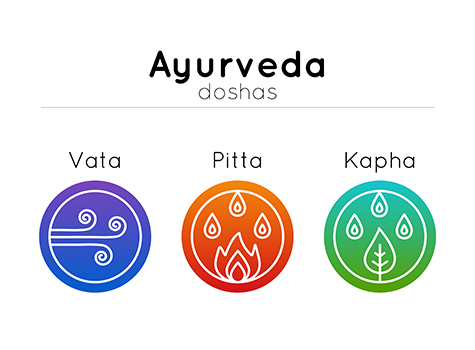Pain is a very personal experience. Only the person experiencing the pain can describe it. The sensation cannot be quantified or measured except in terms of the intensity of the pain felt by the person.
Pain and disability associated with pain, causes millions of people to seek medical help. Pain management remains one of the top reasons people go to the ER (Emergency Room). It is estimated that about 1/3 of the American population suffers from some form of pain, burdening the healthcare systems at an average cost of $600 billion per year. Since there is no objective test for pain, physicians have to rely on the patient’s testimony. The easy solution is painkillers. Medications associated with pain relief are known to have devastating side effects. NSAIDs (Nonsteroidal Anti-Inflammatory Drugs) can cause kidney damage; narcotic pain killers can be addictive, and even fatal. Every day, more than 40 people die in the United States from overdose of prescription painkillers. In 2011, the Center for Disease Control classified prescription drug abuse as an epidemic.
The National Institutes of Health has established a Pain Consortium to study pain and root causes and research alternate treatments:
https://painconsortium.nih.gov/
Types of Pain
Pain can be acute or chronic. Acute pain is sudden and is often a result of injury to tissues, disease and or inflammation. Chronic pain can also have the same above causes, but is long lasting and can be mild or intense. It may be influenced by environmental and other factors. It is important to remember that pain is a symptom of an underlying cause.
Classifications of Pain
Pain is classified depending on the how it is triggered.
Nociceptive Pain:
Somatic
Visceral
Non-Nociceptive
Neuropathic
Sympathetic
Nociceptive Pain: We have specific pain receptors is our body which may be stimulated by temperature changes (hot/cold), vibration, stretch, and chemicals released from damaged cells (lack of oxygen or inflammation).
Somatic Pain: The term musculo-skeletal pain is called somatic pain, and includes pain felt on the skin, muscle, joints, bones and ligaments. Somatic pain is generally sharp and well localized – if you touch it or move the affected area the pain will worsen.
Visceral Pain: It is felt in the internal organs and main body cavities such as lungs and heart, abdomen (bowels, spleen, liver and kidneys), and the pelvis (ovaries, bladder, and the womb). Cramps and aches are generally types of visceral pain.
Nerve Pain or Neuropathic Pain: The pain can originate from the nerves between the tissues and the spinal cord (peripheral nervous system) and the nerves between the spinal cord and the brain (central nervous system). Neuropathic pain can be caused by nerve degeneration, as might be the case in a stroke, multiple-sclerosis, or oxygen starvation. Pain that comes from the nervous system is called non-nociceptive because there are no specific pain receptors. When a nerve is injured it becomes unstable and its signals are not clear. The brain interprets these abnormal signals as pain. This randomness can also cause other sensations, such as numbness, pins and needles, tingling, and hypersensitivity to temperature, vibration and touch. Such symptoms are most commonly seen in uncontrolled diabetes.
Sympathetic Pain: The sympathetic nervous system controls our blood flow to our skin and muscles, perspiration (sweating) by the skin, and how quickly the peripheral nervous system works. Sympathetic pain occurs generally after a fracture or a soft tissue injury of the limbs. Lack of limb use after a time can cause other problems, such as muscle wasting, osteoporosis, and stiffness in the joints.
Pain Management:
More research is showing that the root cause of pain and disease is some form of inflammation. Whether in the joints as in case of arthritis, or in the muscles in case of tendinitis, inflammation can cause various severity of pain. Oxidative stress and lack of proper blood flow and damage to certain tissues may also be a cause of chronic pain.
There is increasing research showing that overall diet and certain specific foods can have benefits for pain relief. Of course, the results would not be as instant as swallowing a Motrin or Tylenol, but changing lifestyles and eating habits have known to show results in a couple of weeks. There may be noticeable changes to the intensity of pain, and or frequency of painful episodes.
Osteoarthritis/Rheumatoid Arthritis
Osteoarthritis is characterized as loss of cartilage in a joint. Research shows that this condition is not merely due to the wear and tear of the joint but is an active inflammatory disease. Studies have shown higher levels of inflammatory factors such as prostaglandins in tissue samples from people suffering from joint pain. Studies also have shown improvement of symptoms of osteoarthritis through the addition of anti-inflammatory foods to the diet such as berries, cherries, avocado, flax seeds, green leafy vegetables, walnuts, and spices such as turmeric and ginger.
Back Pain/Sciatica
Can your cholesterol have anything to do with back pain? Studies suggest that plaque buildup that causes blockage in larger arteries of the heart can also cause blockage in tiny blood vessels that supply oxygen to the spine. This can cause low back pain, disc degeneration and sciatica nerve damage. MRI imaging from patients with chronic back pain show clogged arteries of the spine. Reduced blood flow also hampers the removal of waste products, such as lactic acid, which can in turn irritate the nerve endings, causing pain and deterioration and spinal disc hernia. Eating an anti-inflammatory diet that is high in soluble fiber may help people with back pain and sciatica pain.
Migraines
The most common triggers for migraines are dehydration, missing meals, missing sleep, and stress. Eating small balanced meals at regular intervals and drinking plenty of water through the day may be the best way to avoid the attacks. Our body loves routine. Irregular lifestyle and eating habits cause stress to the nervous system. Certain foods containing sulfites, such as alcohol, wine, certain aged cheeses can be a trigger. Foods and drinks containing artificial sweeteners such as aspartame should also be avoided. Newer research shows that migraines may not be just neurological. Vascular damage or lack of proper blood flow to the small blood vessels in the brain and central nervous system may be to blame.
Fibromyalgia
A condition characterized by chronic pain and fatigue, there is no known cause or cure for fibromyalgia. However, a number of studies have shown vast improvement in symptoms from a vegetarian or vegan diet.
Neuropathy
There are blood vessels within our nerves that can get clogged up. This lack of oxygen within the nerves may arise from blockages within the blood vessels depriving the nerves of oxygen, presumably leading to pain.
Menstrual pain
Studies have shown that women who ate anti-inflammatory foods and avoided sugar saw a huge reduction in the intensity of cramps.
Steps to Fight Pain & Inflammation
• Drink water
• Reduce stress
• Get enough sleep
• Stay physically active
• Eat plenty of fruits and vegetables
• Eat a variety of whole grains and beans
• Eat healthy fats from nuts and seeds
• Avoid sugar in all forms
• Avoid processed foods and artificial sweeteners
• Eat a vegetarian/vegan diet
• Flavor your food with spices! Turmeric, ginger, cinnamon, cloves, fenugreek seeds, oregano, rosemary, and cilantro have all been proven to have anti-inflammatory effects.
— Parul Kharod, MS, RD, LDN is a registered dietitian and licensed nutritionist and works as a Clinical Dietitian with Outpatient Nutrition Services at WakeMed Hospital in Cary and Raleigh. She can be reached at [email protected]
Posted: Monday, August 1, 2016



